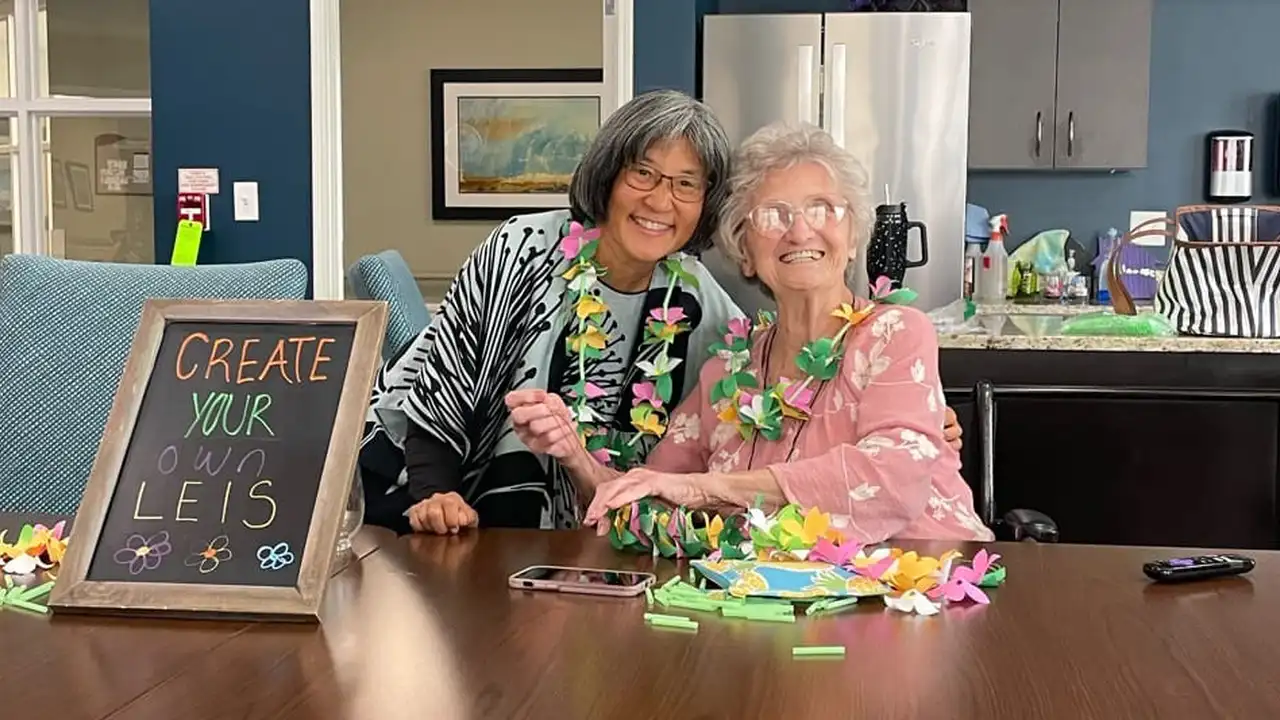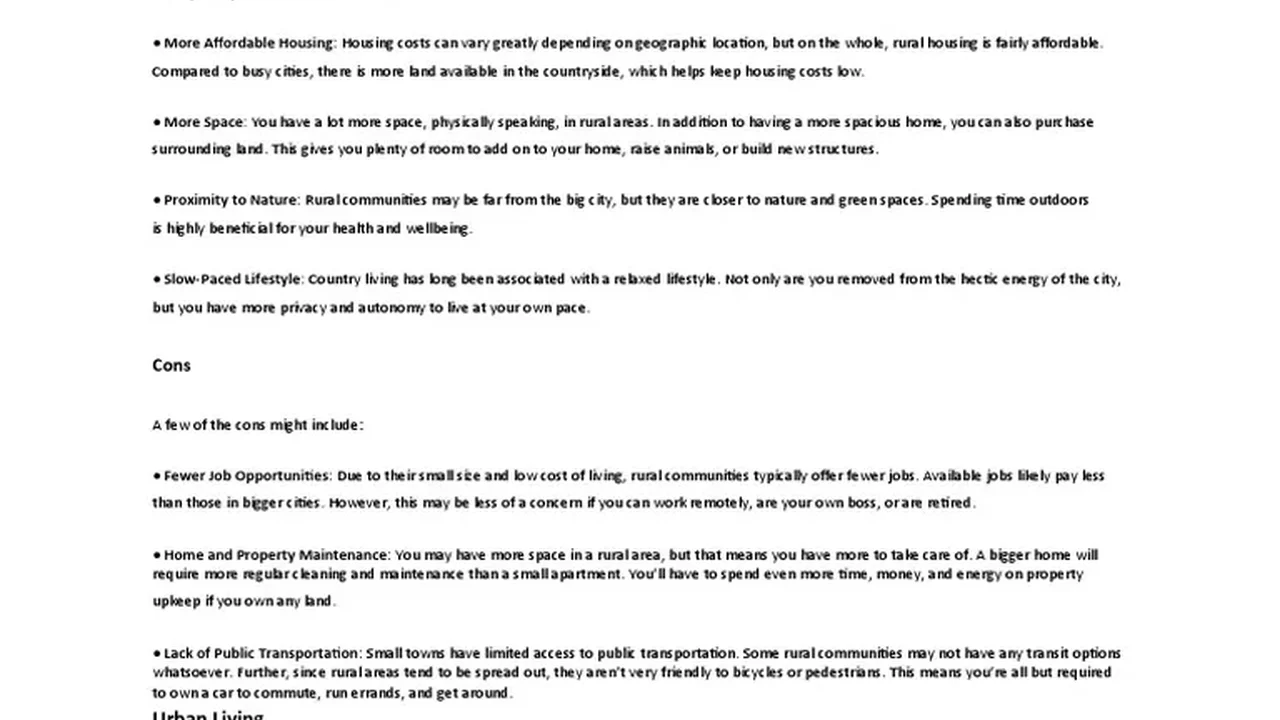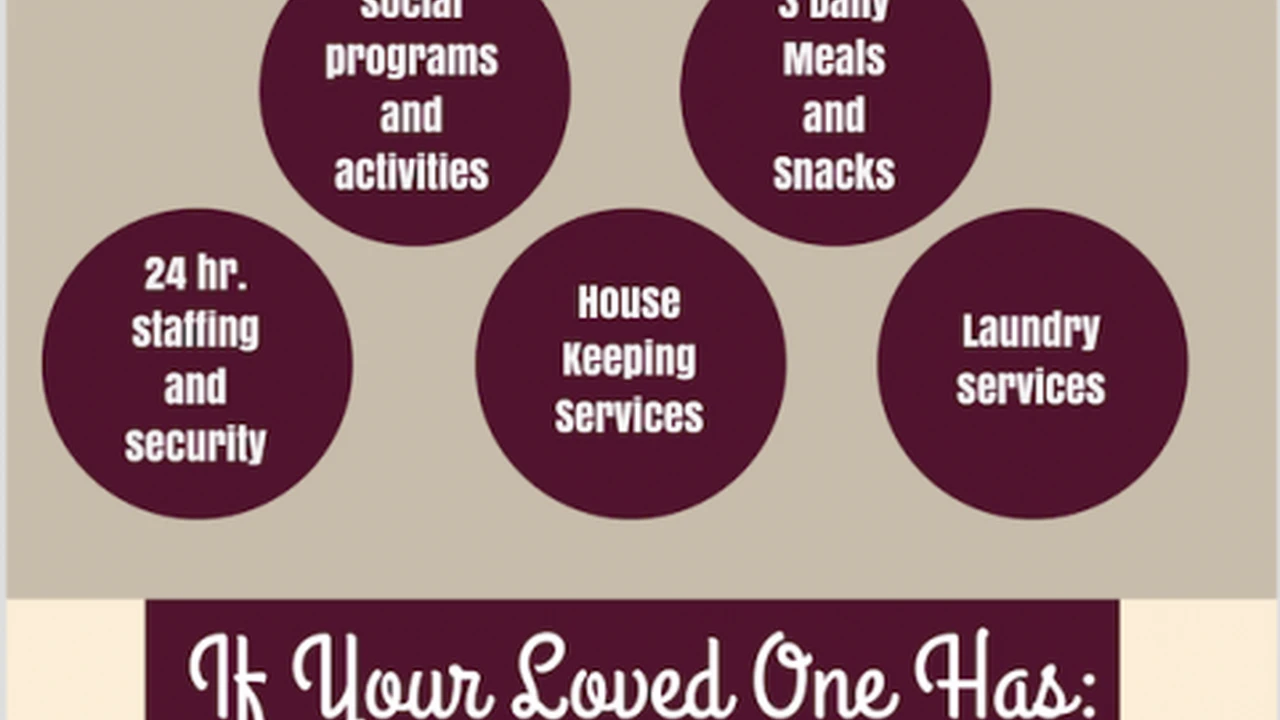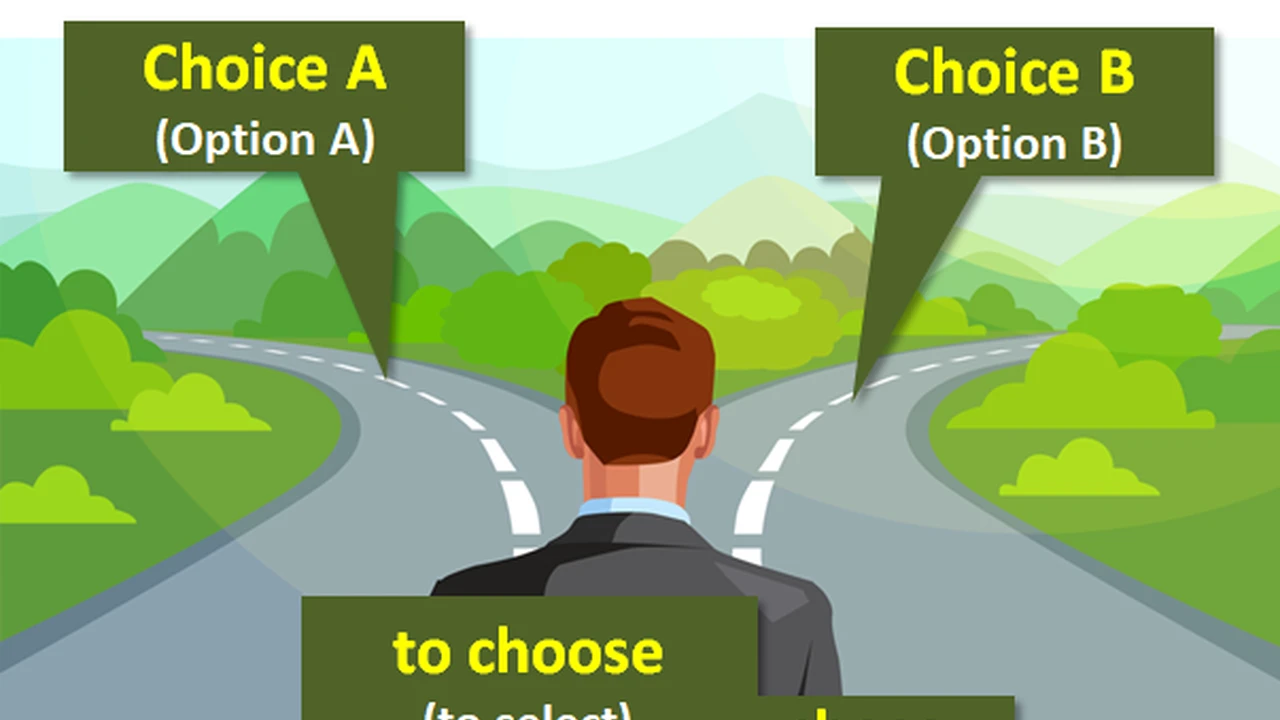Assisted Living Activities Promoting Engagement
Discover the types of engaging activities and social programs offered in assisted living to enhance resident well-being.

Assisted Living Activities Promoting Engagement and Well-being
Assisted living facilities are no longer just places for care; they are communities designed to help seniors thrive. A crucial part of this thriving environment is a robust activities program. These programs are meticulously planned to cater to a wide range of interests, abilities, and cognitive levels, ensuring that every resident has opportunities to engage, socialize, and maintain a sense of purpose.
The Importance of Engaging Activities in Assisted Living Facilities
Engagement is key to a senior's overall health. Studies consistently show that active, socially connected seniors experience better physical health, improved cognitive function, and a reduced risk of depression and anxiety. In an assisted living setting, well-structured activities provide:
- Cognitive Stimulation: Activities like puzzles, trivia, and learning new skills help keep the brain sharp and can slow cognitive decline.
- Physical Health Benefits: Gentle exercises, walking groups, and dance classes improve mobility, strength, and cardiovascular health.
- Social Connection: Group activities combat loneliness and isolation, fostering friendships and a sense of community.
- Emotional Well-being: Creative outlets, spiritual services, and opportunities for self-expression boost mood and reduce stress.
- Sense of Purpose: Engaging in meaningful activities gives residents a reason to look forward to each day and feel valued.
Diverse Types of Assisted Living Activities for Seniors
Assisted living communities offer a broad spectrum of activities, often categorized to address different aspects of well-being. Here's a breakdown of common types:
Physical Activities for Senior Mobility and Fitness
Maintaining physical activity is vital for seniors. These activities are often adapted to various mobility levels, from chair exercises to walking clubs.
- Chair Yoga and Tai Chi: Gentle movements improve flexibility, balance, and strength without putting stress on joints.
- Walking Clubs and Nature Walks: Encourages outdoor activity, fresh air, and light exercise, often in scenic community grounds or nearby parks.
- Dance Classes: From ballroom to line dancing, these classes offer a fun way to stay active and improve coordination.
- Light Strength Training: Using resistance bands or light weights to maintain muscle mass.
- Balance and Fall Prevention Classes: Specifically designed to reduce the risk of falls, a major concern for seniors.
Cognitive Stimulation Activities for Brain Health
Keeping the mind active is crucial for cognitive health. These activities challenge residents intellectually and encourage problem-solving.
- Trivia and Brain Games: Quizzes, crosswords, Sudoku, and other puzzles keep minds sharp.
- Book Clubs and Discussion Groups: Encourages reading, critical thinking, and lively conversation.
- Lectures and Educational Workshops: Covering a wide range of topics from history to current events, often led by guest speakers.
- Learning New Skills: Opportunities to learn a new language, play a musical instrument, or master a craft.
- Memory Games: Specifically designed to improve recall and cognitive function.
Social and Recreational Programs for Community Building
These activities focus on fostering social connections and providing opportunities for fun and relaxation.
- Group Outings: Trips to local museums, theaters, shopping centers, restaurants, or scenic drives.
- Game Nights: Board games, card games (bridge, poker, rummy), and bingo are popular choices.
- Movie Screenings: Often with popcorn and comfortable seating, creating a cinema-like experience.
- Happy Hours and Social Mixers: Opportunities for residents to mingle and enjoy refreshments in a relaxed setting.
- Themed Parties and Celebrations: Holidays, birthdays, and special events are celebrated with festive decorations, food, and entertainment.
Creative and Expressive Arts for Emotional Well-being
Creative outlets provide a means for self-expression, reduce stress, and boost mood.
- Art Classes: Painting, drawing, pottery, and sculpture allow residents to explore their artistic talents.
- Music Therapy and Sing-alongs: Music has powerful therapeutic benefits, evoking memories and promoting emotional release.
- Craft Workshops: Knitting, crocheting, jewelry making, and other crafts provide a sense of accomplishment.
- Creative Writing and Poetry Groups: Encourages residents to share their stories and express themselves through words.
- Drama and Performance Groups: Opportunities to participate in plays, skits, or talent shows.
Spiritual and Wellness Activities for Holistic Health
Addressing the spiritual and emotional needs of residents is an integral part of holistic care.
- Religious Services: On-site or transportation to local places of worship.
- Meditation and Mindfulness Sessions: Techniques to reduce stress and promote inner peace.
- Gardening Clubs: Tending to plants can be therapeutic and provide a sense of purpose.
- Pet Therapy: Interactions with animals have been shown to reduce anxiety and improve mood.
- Volunteer Opportunities: Engaging in charitable activities within the community or for external causes.
Tailoring Activities to Individual Needs and Preferences in Assisted Living
A truly excellent assisted living community understands that one size does not fit all. Activity directors work closely with residents and their families to understand individual interests, past hobbies, and current abilities. This personalized approach ensures that activities are not only engaging but also meaningful and accessible.
- Resident Surveys and Feedback: Regularly gathering input from residents helps shape the activity calendar.
- Individualized Care Plans: Activities are often integrated into a resident's care plan, especially for those with specific cognitive or physical limitations.
- Specialized Programs: Many communities offer dedicated programs for residents with early-stage dementia or other specific needs, adapting activities to be more structured, repetitive, or sensory-focused.
- Family Involvement: Families are often encouraged to participate in activities or suggest ideas that align with their loved one's interests.
Technology Enhancing Engagement in Assisted Living Communities
Technology plays an increasingly vital role in enriching the lives of assisted living residents. From communication to entertainment and cognitive stimulation, modern tools offer new avenues for engagement.
Recommended Technology Products for Assisted Living Activities
Here are some specific products and technologies that can significantly enhance the activity programs in assisted living facilities, along with their typical use cases and price ranges:
1. GrandPad Senior Tablet
Description: The GrandPad is a simplified tablet designed specifically for seniors. It features a large, easy-to-read interface with big buttons for video calls, email, photos, games, and internet browsing. It comes with 24/7 live support and a private family network.
Use Cases:
- Video Calls with Family: Essential for maintaining connections with loved ones, especially those living far away.
- Cognitive Games: Pre-loaded brain-training games like Sudoku, crosswords, and memory puzzles.
- Music and Radio: Easy access to favorite music, podcasts, and radio stations.
- Photo Sharing: Family members can easily upload photos, creating a personalized digital photo album for the resident.
- Internet Browsing: Simplified access to news, weather, and other online content.
Comparison: Unlike standard iPads or Android tablets, the GrandPad is purpose-built for seniors, removing complexity and potential frustrations. It prioritizes ease of use and security.
Price: Typically ranges from $200-$300 for the device, plus a monthly service plan (around $40-$60) for connectivity and support.
2. Rendever Virtual Reality for Seniors
Description: Rendever offers a virtual reality (VR) platform specifically designed for senior living communities. It allows residents to experience travel, revisit old homes, attend virtual events, and engage in therapeutic experiences through VR headsets.
Use Cases:
- Virtual Travel: Residents can 'visit' Paris, go on an African safari, or explore historical landmarks from the comfort of their community.
- Reminiscence Therapy: Revisit old neighborhoods, childhood homes, or significant places from their past.
- Social Engagement: Group VR sessions foster shared experiences and discussions.
- Cognitive Stimulation: Engaging with new environments and narratives can stimulate memory and cognitive function.
- Pain and Anxiety Reduction: Immersive VR experiences can distract from discomfort and promote relaxation.
Comparison: While consumer VR headsets exist, Rendever's platform is curated with senior-appropriate content and designed for group facilitation within a community setting, often with staff support.
Price: This is typically a B2B solution for communities, with pricing based on subscriptions and hardware packages, often ranging from several hundred to a few thousand dollars annually depending on the community size and features.
3. Jukebox Health Smart TV System
Description: Jukebox Health provides a smart TV system tailored for senior living, offering a curated selection of content including classic movies, exercise programs, educational documentaries, and interactive games, all accessible via a simplified remote control.
Use Cases:
- Personalized Entertainment: Residents can easily access content relevant to their interests and generation.
- Group Activities: Facilitates movie nights, group exercise sessions, or trivia games in common areas.
- Cognitive Engagement: Interactive games and educational content keep minds active.
- Information Hub: Can display community announcements, activity schedules, and dining menus.
Comparison: Unlike a standard smart TV, Jukebox Health's interface is simplified, content is curated for seniors, and it often integrates with community management systems.
Price: Similar to Rendever, this is a B2B solution with subscription-based pricing for communities, varying based on the number of units and features.
4. Eversound Wireless Headphone System
Description: Eversound provides wireless headphones designed to improve audio clarity for seniors, especially those with hearing loss. The system connects to TVs, projectors, or live speakers, allowing residents to hear clearly without disturbing others.
Use Cases:
- Movie Screenings: Ensures all residents can enjoy films with clear dialogue.
- Lectures and Presentations: Improves comprehension during educational sessions.
- Music Therapy: Allows individuals to fully immerse themselves in music without external distractions.
- Group Discussions: Facilitates clearer communication in group settings.
Comparison: Standard headphones can be cumbersome or uncomfortable for seniors. Eversound's design prioritizes comfort, ease of use, and superior sound quality for those with hearing impairments.
Price: Systems typically start from $1,000-$2,000 for a basic setup with multiple headphones, scaling up for larger communities.
5. iN2L (It's Never 2 Late) Engagement Technology
Description: iN2L offers a comprehensive, touch-screen based system with a vast library of content tailored for seniors, including games, therapy programs, virtual travel, educational content, and communication tools. It's designed to be highly intuitive and engaging.
Use Cases:
- Personalized Engagement: Residents can choose activities based on their interests and cognitive levels.
- Therapeutic Programs: Content designed for cognitive therapy, physical therapy, and reminiscence.
- Social Interaction: Facilitates group games and discussions around shared content.
- Family Connection: Allows for video calls and photo sharing.
- Life Story Creation: Residents can create digital scrapbooks and share their life stories.
Comparison: iN2L is a more comprehensive platform than a single tablet, offering a wider range of curated content and often larger, more accessible touchscreens for communal use.
Price: This is a premium B2B solution, with pricing varying significantly based on the hardware (tablets, large touchscreens) and subscription level, often ranging from a few thousand to tens of thousands of dollars for a full community implementation.
The Role of Activity Directors and Staff in Assisted Living Engagement
While technology and diverse programs are important, the heart of a successful activity program lies with the dedicated staff. Activity directors and their teams are responsible for:
- Planning and Scheduling: Creating a varied and engaging monthly calendar.
- Facilitation: Leading activities, encouraging participation, and adapting programs as needed.
- Personalization: Getting to know residents individually to suggest relevant activities.
- Encouragement: Gently motivating residents to try new things and stay active.
- Safety: Ensuring all activities are conducted safely and are appropriate for residents' physical and cognitive abilities.
- Feedback Loop: Constantly seeking feedback from residents and families to improve offerings.
Measuring the Impact of Activities on Resident Well-being
Assisted living communities often track the effectiveness of their activity programs through various means:
- Participation Rates: Monitoring how many residents attend different activities.
- Resident Feedback: Surveys, suggestion boxes, and direct conversations.
- Observation: Staff observing residents' mood, engagement levels, and social interactions during activities.
- Family Testimonials: Feedback from families on their loved one's happiness and engagement.
- Health Outcomes: While harder to directly attribute, improvements in mood, cognitive function, and physical health can be indirectly linked to robust activity programs.
Choosing an Assisted Living Community Based on Activities and Engagement
When you're touring assisted living communities, don't just look at the rooms and dining hall. Pay close attention to the activity program. Here are some tips:
- Review the Activity Calendar: Ask for a copy of the current and past monthly calendars. Look for variety and activities that align with your interests.
- Observe an Activity in Progress: If possible, visit during an activity to see how residents are engaging and how staff are facilitating.
- Talk to Residents: Ask current residents about their favorite activities and how they feel about the program.
- Interview the Activity Director: Ask about their philosophy, how they personalize programs, and what new activities they're planning.
- Inquire About Technology: Ask what technologies they use to enhance engagement and communication.
- Understand Transportation: If off-site trips are important, confirm transportation availability and frequency.
Ultimately, the goal of assisted living activities is to create an environment where seniors can continue to learn, grow, socialize, and find joy every day. A community that prioritizes a diverse, engaging, and personalized activity program is one that truly cares about the holistic well-being of its residents. It's about living life to the fullest, no matter the age or stage.
:max_bytes(150000):strip_icc()/277019-baked-pork-chops-with-cream-of-mushroom-soup-DDMFS-beauty-4x3-BG-7505-5762b731cf30447d9cbbbbbf387beafa.jpg)






